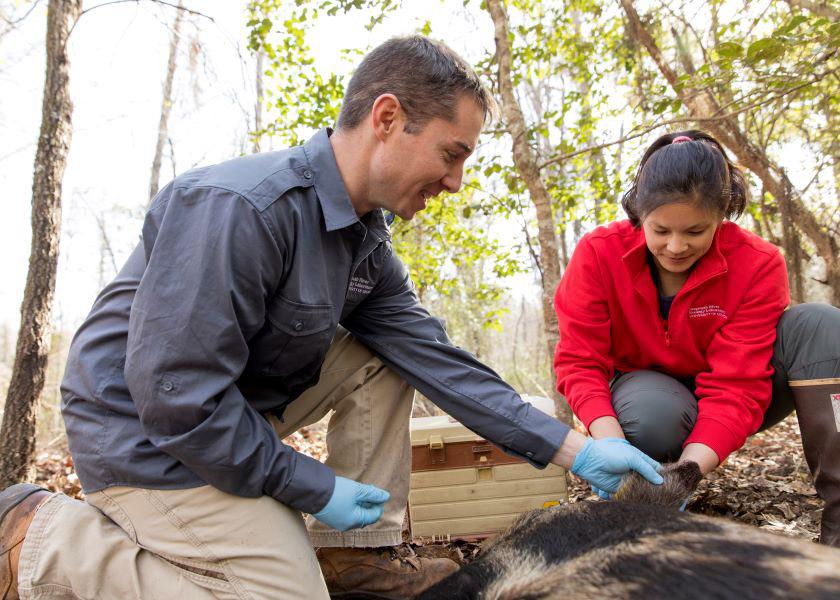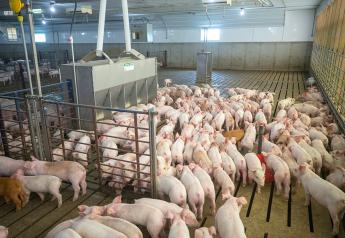Predict Wild Pig Movements with Terrain and Weather Clues

As the wild pig population continues to grow in the U.S. and present significant challenges, new research out of the University of Georgia may help farmers, landowners and government agencies fine-tune their strategies for limiting crop and property damaged caused by these invasive pests.
“By tracking wild pig movements in and around the 310-square-mile Savannah River Site near Aiken, S.C., researchers at UGA’s Savannah River Ecology Lab (SREL) and Warnell School of Forestry and Natural Resources confirmed some long-held suspicions about how pigs establish their home ranges—and shed new light on the question, as well,” according to an article from the University of Georgia. “Not only are home ranges largely defined by the types of habitat pigs prefer, the researchers found, but air temperature and weather also are significant factors in predicting where animals will be at any given time.”
The U.S. has approximately 9 million wild pigs that cause $1.5 billion in damages each year, trampling crops, rooting up turf and topsoil, destroying levees and rights of way, and generally wreaking havoc across ever-widening swaths of the country, the University of Georgia reports.
“Pigs are one of the most adaptive ecological generalists,” Jim Beasley, an associate professor in Warnell and SREL, said in the article. “They’re really intelligent animals, and management of them often has to be really adaptive, as well, changing on a week-to-week or even day-to-day basis. It all ties back to efficiency of management and how you allocate your resources.”
The research team’s goal was to provide knowledge of wild pig movements at a temporal scale, at which most management practices and decisions occur. They looked at variables such as habitat quality, weather and landscape characteristics.
Using baited traps to temporarily capture the animals, the team fitted 49 wild pigs with radio collars to track their movements over a year, the article said. Their data proved that pigs generally configure home ranges along tracts of their preferred habitat of bottomland hardwood swamps. Researchers explain that this type of vegetation offers plenty of forage, but water availability is perhaps the most important part in this hot climate.
The researchers also discovered that female pigs tend to remain closer to good habitat and water than males.
“In most mammals, females are more tied to resources than males,” Beasley said in the article. “Males often move around more throughout the landscape to gain access to females—especially pigs, which can breed year-round.”
The team also discovered a relationship between temperature and air pressure and pig home ranges. Air pressure was used as a proxy for weather—a rising barometer typically signifies clear weather, while falling air pressure can mean an approaching storm. The researchers found that as temperature rose and air pressure fell, pig movements shrank.
When pigs see bad weather coming, they tend to concentrate their movements, probably in areas of cover to stay out of the elements. Beasley said this has a direct application in how people implement trapping or other control programs and deciding where and when to concentrate efforts.
He said it may also have application for something more important than property damage. As outbreaks of African swine fever (ASF) get closer to the U.S., he pointed out that this disease can devastate domestic and wild pig populations. The virus is highly transmittable, both through living and dead animals.
It’s a major economic and ecological issue, Beasley said in the article.
This research was conducted in collaboration with the National Wildlife Research Center, a unit of the USDA Animal and Plant Health Inspection Service. The study was published in Pest Management Science; in addition to Beasley and Lindsay Clontz, first author on the study, co-authors included NWRC research scientists Kim M. Pepin and Kurt C. VerCauteren. The work was supported with funding from USDA-APHIS and the U.S. Department of Energy.
More from Farm Journal's PORK:
Pig Farmers Commit to Sustainability: Here’s the Proof
African Swine Fever: Cases Explode in Vietnam, New Case in Germany
K-State Researcher Continues Efforts to Halt Spread of African Swine Fever







